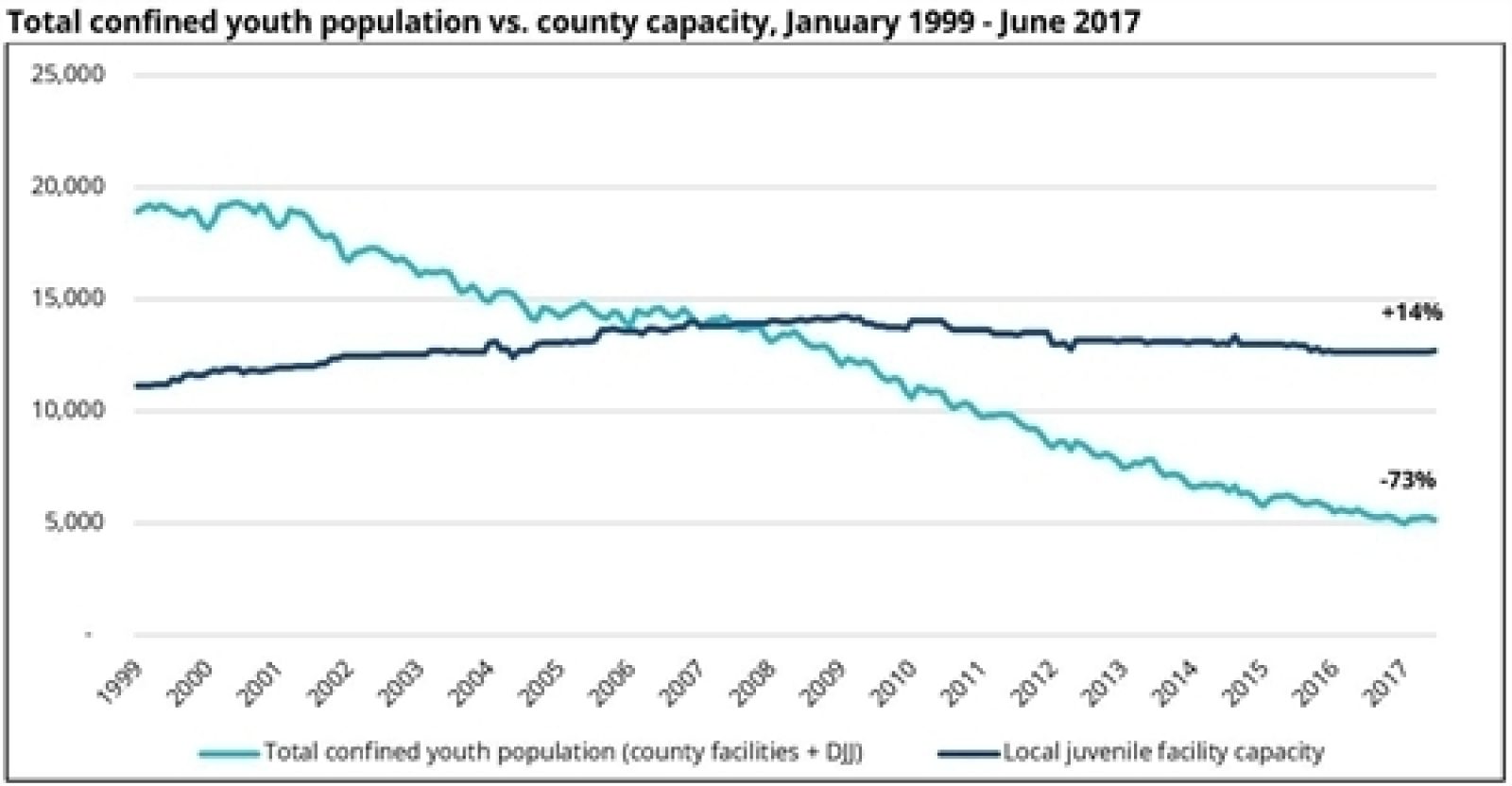SAN FRANCISCO – April 4, 2018 – A new fact sheet from the Center on Juvenile and Criminal Justice finds that juvenile justice facilities across California are operating at well below their rated capacity. Due to declines in juvenile arrests and subsequent reductions in the population of juvenile justice facilities, there is unprecedented available capacity in state-run youth institutions and county-run juvenile halls, camps, and ranches. A phased realignment from the state youth correctional system, the Division of Juvenile Justice (DJJ), to secure county facilities would generate savings, allow youth to remain closer to home, and curb the trauma and violence endemic to DJJ.
Fact Sheet: California’s Local Juvenile Facilities Can Absorb the State Youth Correctional Population

The fact sheet finds:
- Since 1999, California’s confined population has declined by 73 percent, yet the capacity of county-run juvenile facilities has increased by 14 percent. Currently, county facilities are operating at just 35 percent of their rated capacity and DJJ is operating at just 36 percent of rated capacity.
- Since July 2007, local juvenile facilities have maintained sufficient bed capacity to accommodate all confined youth in California, including those held at DJJ. With approximately 8,200 vacant beds in county-run juvenile facilities, nearly every California county could place its DJJ population in local juvenile halls, camps, or ranches.
- A phased realignment of youth to county facilities would allow for the closure of one or more DJJ facilities. For high-needs youth, county-run facilities are preferable to the state system because they offer smaller settings and proximity to the community, which eases a youth’s transition home.